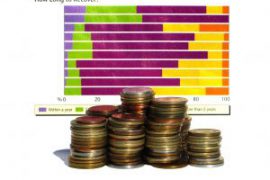Supermarkets, banks and building societies are locked in a personal loan rate war in a bid to attract borrowers who have overspent at Christmas or are looking to splash out on a summer holiday.
Interest rates have fallen to their lowest for more than two years for loans of £7,500 or more – but the bad news is borrowers looking for smaller amounts have to pay a lot more.
The average rate for a £3,000 unsecured personal loan is an eye-watering 15.12% – up 2.19% compared with November 2008.
Borrowing £5,000 sees the rate drop to 10.11% – still up 1.6% from November 2008 – but the average rate for a £7,500 loan is 7.89%. That’s just 0.04% up on the November 2008 rate of 7.85% and the lowest rate over the intervening 26 months.
The market seems to promote a ‘more you borrow, the more you save’ attitude to try and tempt anyone seeking a loan to take more money than they may really want.
All the most competitive rates and deals are for personal loans from £7,500 to £15,000.
Several big lenders have reduced rates over Christmas and the New Year.
Week of cuts see personal loan rates tumble
The leading providers are Santander (7.3% through comparison sites only), Sainsbury’s (7.4%) and Marks and Spencer (7.5%). All these rates and deals were launched within the past week.
The M&S loan saw a 2.4% cut in rates down from 9.9% – saving someone who borrows £10,000 about £11.50 month on repayments over a 60 month term.
Typically, monthly repayments on a £10,000 loan over 60 months are about £200 – but keener rates do not make that much of a difference to cost – a Sainsbury’s loan at 7.4% has monthly payments of £198.77, while a similar loan from the AA at 8.9% is just £7.17 per month more at £205.94.
Anyone looking for a loan should bear in mind that grabbing a deal at one of these headline rates is not that easy.
The best unsecured loan rates are only available to borrowers with impeccable credit records who want £7,500 or more. Many rates are offered to existing customers only in a bid to tempt borrowers to consolidate existing loans and take out more money for a similar monthly repayment.




